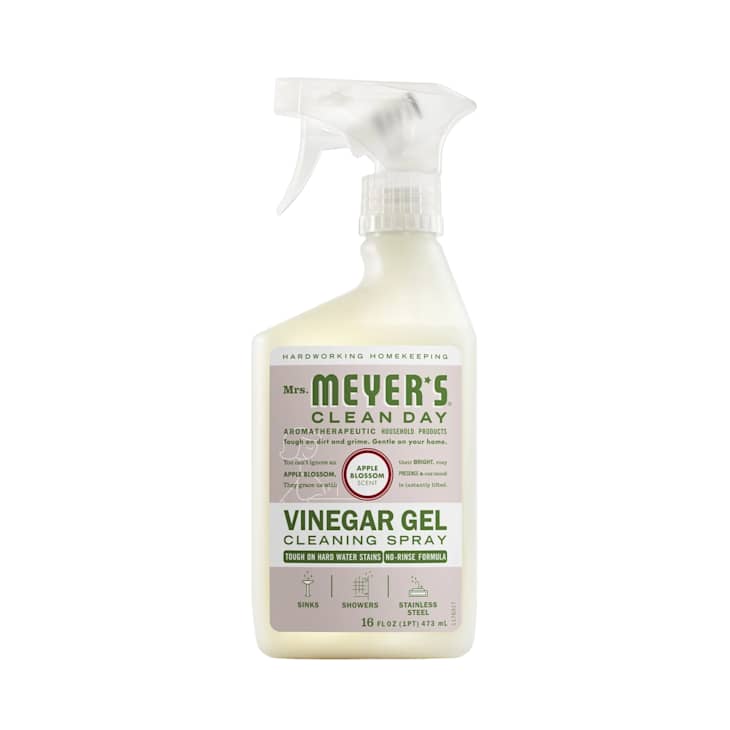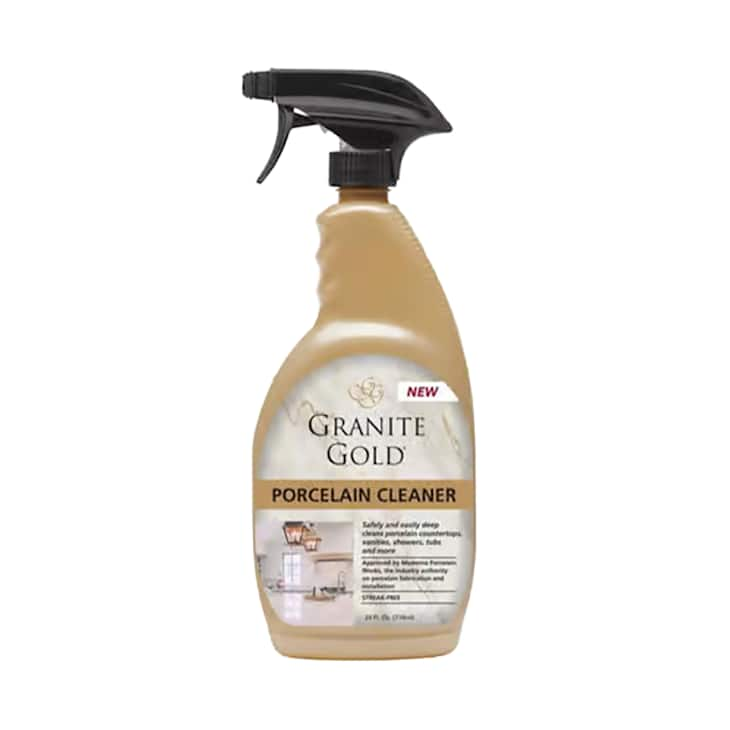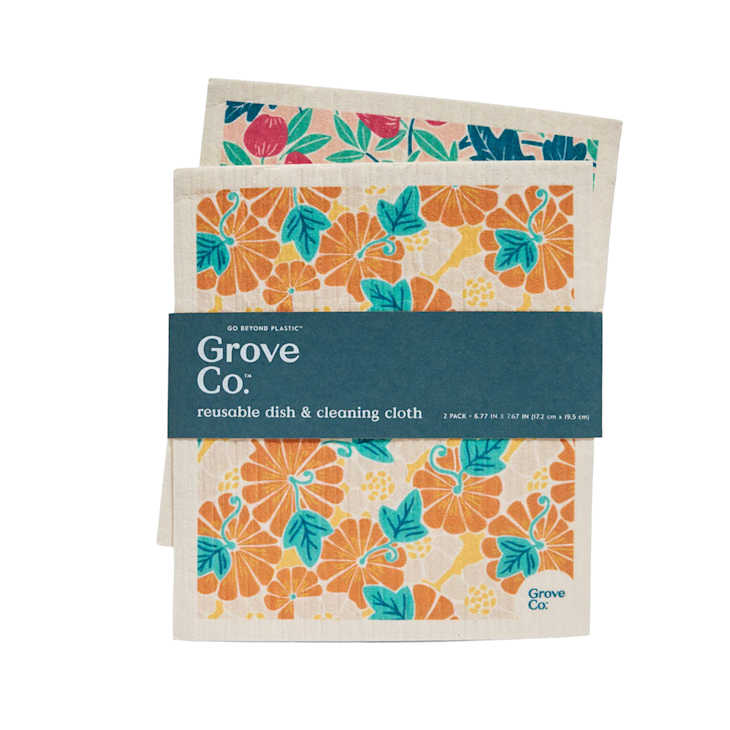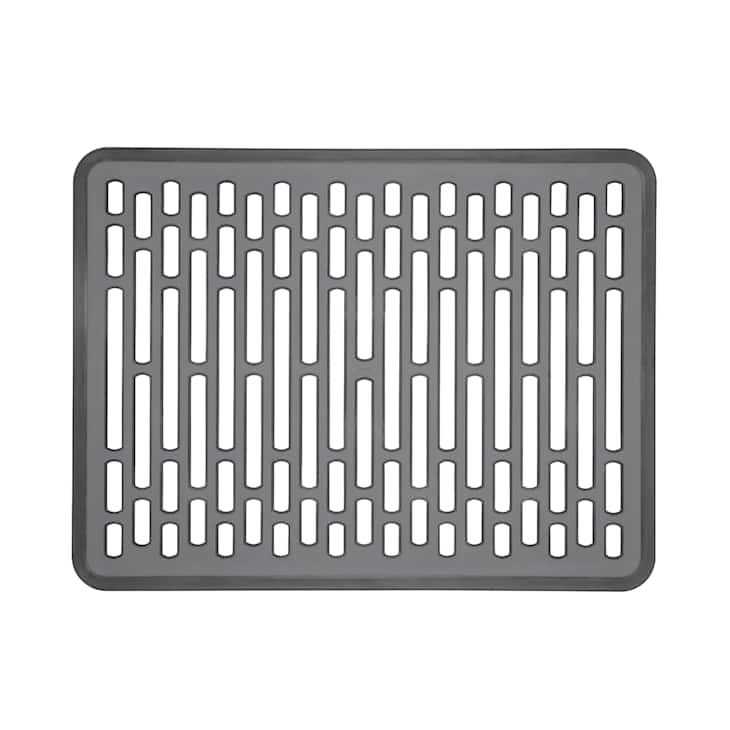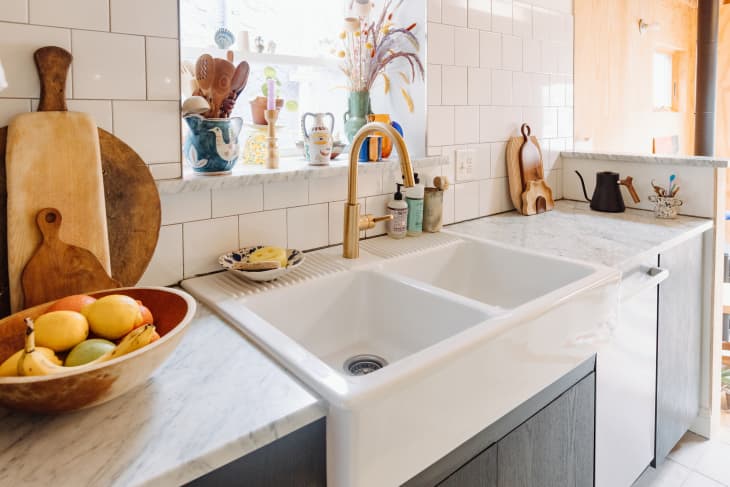

There’s nothing more classic than porcelain sinks. They’re functional, and durable, and they fit everyone’s vibe — from farmhouse to contemporary. And while they’re renowned for being easy to clean, they’re notoriously susceptible to stains and chips, particularly kitchen sinks that experience more daily wear than bathroom sinks.
Whether you’ve had your kitchen sink for years or are thinking of investing in one, it’s never too late to know how to clean a porcelain sink and how to maintain it for years to come.
The Best Way to Clean a Porcelain Sink
- Remove any loose debris, then rinse thoroughly.
- Scrub the surface with warm water and mild dish soap.
- Apply a nonabrasive powder or paste cleaner to a soft sponge or microfiber cloth and rub in a circular motion.
- Let the cleanser sit, then wipe it away.
- Follow with a spray of white vinegar mixed with water for extra shine. Rinse and buff dry with a clean microfiber cloth.
The Best Way to Clean a Porcelain Kitchen Sink
It may seem obvious, but the first and most important step is to keep your sink clean on a daily basis. This will help extend the time needed between deep cleanings.
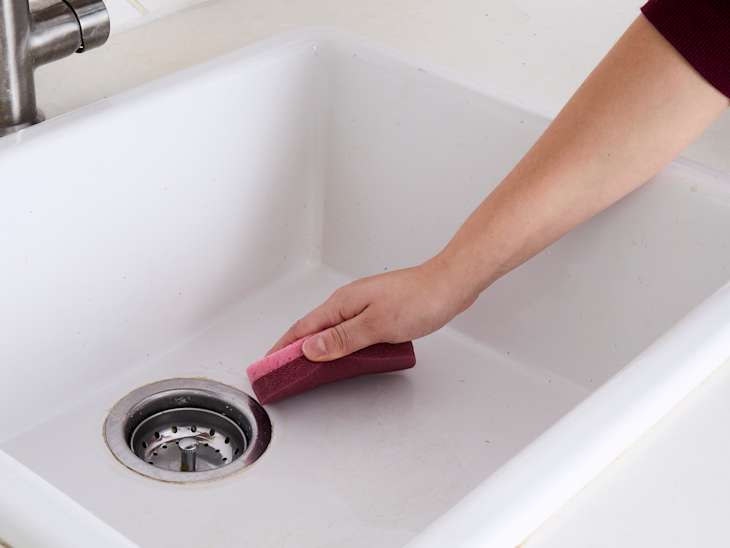
- Remove any loose debris like food and dirt from the surface of the sink, then rinse thoroughly.
- Scrub the surface with warm water and mild dish soap. Take care around the drain and faucet.
- Apply a nonabrasive powder or paste cleaner to a soft sponge or microfiber cloth and rub it in a circular motion. “Plant-based powders or a paste of baking soda and water will be your best bet,” Maria Mooney, nontoxic cleaning expert and brand director at Truly Free Home, recommends.
- Let the cleanser sit, then wipe it away.
- Follow it up with a spray of white vinegar mixed with water for extra shine, recommends Marla Mock, president of Molly Maid. Then rinse and buff dry with a clean microfiber cloth.
Beyond regular daily cleaning, if your white sink has some yellow or brown staining or scratches, the fix is easier than you might think. Here’s how to remove stains from your porcelain sink.
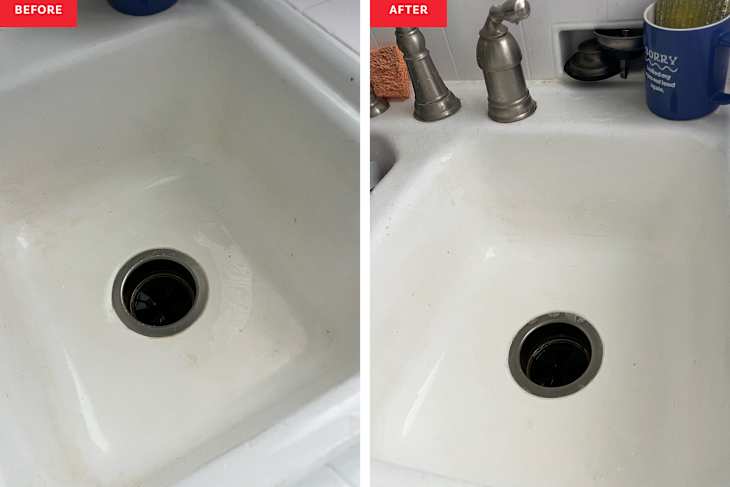
How to Remove Stains from Your Porcelain Sink
- Apply the cleaner directly to the surface where the stains are.
- Gently scrub cleaner into the stains with a soft scrub brush or sponge in circular motions.
- Rinse with cool water and dry with a clean microfiber cloth. Repeat steps as necessary.
“For tough stains, you can apply a drop or two of hydrogen peroxide or lemon juice on a sponge and gently work it into the stain, rinsing it with water afterwards,” Mock says.
What Not to Use on Porcelain Kitchen Sinks
Mooney says that it’s important to keep in mind that porcelain has a glazed surface that is more sensitive to abrasive and harsh chemicals compared with stainless steel or composite sinks. “Always avoid metal scrubbers or bleach, which can scratch or dull the finish,” she says.
Other Tips to Keep Your Porcelain Sink White and Shiny
Daily cleaning will undoubtedly keep your porcelain kitchen sink in excellent shape for years to come, but there are still a couple of practices to consider when it comes to long-term care.
Keep your sink dry
According to Scott Shrader, cleaning expert and chief marketing officer at Cottage Care, one of the easiest ways to make your sink look dull and dirty, even after you’ve cleaned it, is to let water spots dry: “I recommend wiping the sink dry after heavy use in order to reduce mineral deposits and spots, especially if you live in an area with hard water.”
Leung recommends Swedish dishcloths since “these cellulose cloths are gentle enough not to scratch the porcelain while still cleaning effectively.” Not only are they a more eco-friendly alternative to paper towels and many sponges, they can also add a thematic, colorful touch to your kitchen, like with these Grove Co Swedish Dishcloths in a cute seasonal design.
Use a rubber sink mat
“It’s all about prevention,” Shrader says. “Use a rubber sink mat on the bottom of the sink to protect it from scratches from utensils and the bottoms of pots and pans.”
Mock also recommends prioritizing a sink mat — the OXO Good Grips Sink Mat is a useful option — while also avoiding leaving coffee, tea, wine, or other foods and liquids with high stain probability sitting in your sink, particularly overnight.
